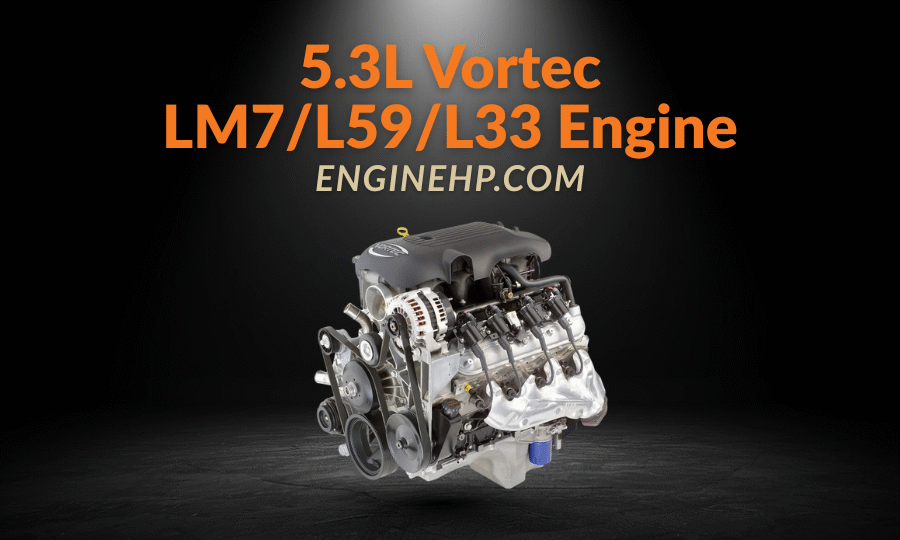
GM Engines: 5.3L Vortec LM7/L59/L33 Engine Hp, Reliability, and Performance
This 5.3L Vortec LM7/L59/L33 engine from GM is the most reliable engine. The first thing to note is that certain engines aren’t just used to make cars and trucks, but they also are known for their ability to create. For instance, the 5.3L Vortec LM7/L59/L33 engine did exactly what it was designed to accomplish in the case of GM vehicles and SUVs in the last quarter of 1990, and even beginning of the 2000s. Small-block V8s from this category were durable, reliable and could be modified. This engine was also the basis of Chevy Silverados Tahoes as well as GMC Sierras and Cadillac Escalades. This 5.3L Vortec is worth your time regardless of whether you’re a truck owner who can recall how durable it was in past times, or an owner of a business looking to locate solid engines for their fleets.
Overview of the Vortec 5.3L Family
3 versions LM7, L59, and L33 comprised the 3rd generation of V8s with small blocks, which was launched in 1999. Each model has its own unique focus:
- LM7: This is the most elementary 5.3L Vortec is the most frequently used of the three.
- L59: The model can be run using E85 ethanol or gasoline.
- L33: is an alternative to “High Output” 5.3, which has more horsepower, and an aluminum block.
General Specs (varies by variant):
| Parameter | Specification |
| Manufacturer | Romulus, Michigan, USA; St. Catharines, Ontario, Canada |
| Production Years | 1999–2007 |
| Cylinder Block Material | Cast Iron (LQ4, LQ9); Aluminum (LM4, L33) |
| Cylinder Head Material | Aluminum |
| Fuel Type | Gasoline |
| Fuel System | Port Fuel Injection |
| Configuration | V |
| Number of Cylinders | 8 |
| Valves per Cylinder | 2 |
| Valvetrain Layout | OHV |
| Bore, mm (in) | 96.0 mm (3.78 in) |
| Stroke, mm (in) | 91.0 mm (3.58 in) |
| Displacement, cc | 5,327 cc (5.3 L) |
| Type of Internal Combustion Engine | Four-stroke, naturally aspirated or turbocharged internal combustion piston engine |
| Compression Ratio | 9.5:1, 10.0:1, 10.3:1 |
| Power, hp | 270–330 hp (201–246 kW) |
| Torque, lb-ft | 315–335 lb-ft (427–454 Nm) |
| Engine Weight | 390 lb (177 kg) – LM7500 lb (227 kg) – LQ4, LQ9 |
| Firing Order | 1-8-7-2-6-5-4-3 |
| Engine Oil Capacity, Liter | 5.7–6.0 L (6.0–6.3 qt) with filter |
| Engine Oil Weight | SAE 5W-30 |
| Oil Change Interval, Miles | 7,000 (11,000 km) or 12 months |
| Cars with this Engine | Chevrolet Silverado, Chevrolet Suburban, Chevrolet Tahoe, Chevrolet Express, Chevrolet Avalanche, Chevrolet SSR, Chevrolet Trailblazer EXT, GMC Sierra, GMC Yukon, GMC Yukon XL, GMC Savana, Buick Rainier, Cadillac Escalade, Hummer H2, Isuzu Ascender |
Performance: Power for the Everyday Driver
5.3L Vortec engines weren’t meant to be flashy engines with a focus on performance, but they did provide the power you require to get the job done.
- LM7: The LM7 engine produced approximately 285 horsepower and 325 pounds of torque.
- L59: L59 has the exact engine, however it is using flex-fuel.
- L33: Greater efficiency of compression, as well as the aluminum block contributed to the increase of output into 300 horsepower.
For trucks, this meant rapid acceleration as well as smooth towing, and the ability to manage massive loads with ease. Imagine it as an experienced agriculturalist. It’s not attractive, but it can always finish the task.
Engineering Highlights
What set the 5.3L Vortec family apart wasn’t just its size. It was also a clever design.
Important Features:
- Sequential Fuel Injection: Sequential fuel injection to ensure greater throttle response and efficiency.
- Cast-iron or aluminum block options: You can choose between cast iron and aluminum blocks. Iron is more robust (LM7/L59) but aluminum blocks weigh less (L33).
- Cathedral-port cylinder heads: Facilitated the flow of air and increased the efficiency in combustion.
- Coil-near-plug ignition system: Coil-near-plug ignition systems are more reliable than models that employ distributors.
- Flex-fuel capability: Available just on the L59. This helps to make it more efficient.
Beginning in 2000, they were the most cutting-edge technologies that helped GM to keep ahead of the competition.
Reliability: The 5.3L Vortec Legacy
The 5.3L Vortec engines became famous because of their reliability. A large number of these engines are in use in the present. They can range from 200,000-300,000 miles.
Strengths:
- Durable block design: A striking block design, especially for the cast-iron models LM7/L59.
- Simple OHV layout: A simple OHV layout is easier for maintenance than a complicated DOHC engine.
- Proven track record: A track record of a billion dollars in revenue and tested in the real world.
Common Issues:
- Intake manifold gasket leaks: gaskets to seal the intake manifolds that leaks can be a danger in engines with a lot of mileage.
- Oil consumption: Certain motors required extra oil when they became older.
- Knock sensor problems: The entry of moisture was the most common cause.
Despite the challenges with these issues, and even in the face of these challenges even with these issues, the 5.3L Vortec is still one of the most sought-after small-blocks from GM.
Fuel Economy: Not Bad for a V8
This 5.3L Vortec engine got decent gas mileage for an engine with a V8 that drove big trucks.
- City MPG: ~14–16 mpg
- Highway MPG: ~19–21 mpg
- Combined: ~16–18 mpg
The L59 could be powered by Ethanol which provided more alternatives, but it typically used fuel in a less efficient way. However, these numbers were fantastic for trucks at the beginning of 2000.
Buyer’s Perspective: Why Own a 5.3L Vortec?
The buyers of trucks and SUVs felt very comfortable with the LM7/L59/L33 engine.
- Affordable entry point:This engine isn’t expensive for older trucks.
- Aftermarket support: A large number of people and parts are easily accessible.
- Towing capability: Towing capability is strong enough to pull boats, trailers or campers.
- Longevity: There are many examples of high mileage that show how long engines can last.
It’s similar to buying a durable pair of boots for your job. They may not look great, but they’ll last time.
Business Perspective: Fleet Durability
- Durability under load: Suitable for farmers, utility fleets and contractors.
- Serviceability: Serviceability Mechanical engineers can address the problem fast and cost-effectively with replacement parts.
- Resale value: The engines provide trucks with an image that is positive that allows them to keep the value they bring to their customers.
- Volume availability: Accessibility of Quantity Engines and components are accessible since there were millions of copies created.
It was used by many to finish their duties all the way from large fleets in cities to small businesses.
Comparing to the M40B16 Engine
It might seem strange to compare it being compared with 5.3L Vortec engines to the M40B16 engine. However, this is an excellent method to highlight the distinctions in their designs.
- M40B16 Engine: The Engine M40B16 engine is an 1.6L BMW four-cylinder engine from the 1990s, which produces approximately 100 hp. It was developed to be utilized in small, compact vehicles.
- 5.3L Vortec Engine (LM7/L59/L33): It’s an engine with a V8 that produces 285 to 310 hp. It was designed to be used for hauling or towing and also powering big trucks.
It was designed to make it more efficient in fuel usage and to be more refined. Its 5.3L Vortec engine 5.3L Vortec was made to be more robust and durable. Both engines performed in what they were engineered to do.
Real-World Example: Silverado with an LM7
Imagine a 2004 Chevy Silverado that has an LM7 engine inside. Every day, a person removes it with tools, attaches it to a trailer and then goes on to leave. The engine LM7 isn’t one to complain. It is unstoppable in power and can start every day. It is still operational even after 200,000 kilometers. That’s exactly the kind of reliability that made the Vortec to the level of fame it has today.
Maintenance Tips for Longevity
Are you trying to upgrade your Vortec 5.3L engine running for many years? Be sure to adhere to these guidelines:
- Oil changes: Eliminating the oil With a good oil, you need to switch the oil once every 5-6 miles.
- Cooling system checks: Clean the coolant at least once every 60,000 miles to keep it from heating up too much.
- Inspect intake gaskets: Replace them as soon as you spot the presence of leaks.
- Knock sensor care: Take proper care with your knock sensor by ensuring that it’s properly sealed to stop moisture from getting inside.
- Transmission pairing: To avoid problems, make sure that the 4L60E/4L65E is in good condition.
They’re said to last for more than 250,000 miles if they are maintained properly.
Aftermarket & Tuning Potential
People who are enthusiastic about cars and trucks will love Vortec engines. 5.3L Vortec engines.
- ECU tuning: ECU tuning gives you more power and makes the throttle respond faster.
- Performance cams: These performance cameras can make your car perform better.
- Swap potential: The reason HTML0 is a very well-liked option for LS swaps on cars is due to the fact that they are readily available.
- Forced induction: If you have the right engine, it could be capable of handling turbochargers or superchargers.
Many prefer L33 over L33 for their builds that are performance-oriented due to its use from aluminum, and also has a higher compressive ratio.
Why the 5.3L Vortec Still Matters in 2025
This 5.3L Vortec LM7/L59/L33 remains vital even with the most recent EcoTec3 engine as well as hybrids.
- Affordability: Older vehicles with these engines are priced at a reasonable price.
- Proven reliability: Trustworthy and tested many years of use in extreme environments.
- Swap culture: Swap culture is a huge success for hot rodders and car enthusiasts who create and construct projects.
- Parts support: Parts support is easy to find because the majority of them were made.
It is one of the most sought-after small-block designs by GM which has been around for a long time.
Key Takeaways
- Variants: The LM7 (standard) L59 (flex-fuel) L59 (flex-fuel) and finally, L33 (high-output aluminum).
- Power: 270-310 hp and 335 pounds-feet torque.
- Reliability: Given the proper treatment, they can last for over 200000 miles.
- Business use: The most favored business option due to its difficulty and easy to fix.
- Comparison: The 5.3L Vortec engine was built to be robust, whereas the M40B16 was created to be small and efficient.
Conclusion
Its 5.3L Vortec LM7/L59/L33 engine wasn’t about appearances but rather all about trust. It was strong enough for towing and hauling and was easy to maintain. It was also known for its durability. expected. It’s still an attractive option for those wanting to buy second-hand. It could be a success in establishing its reputation as a reliable machine for firms. Also, the Vortec 5.3L did more than just move trucks but also helped GM to become a leader in reliability.
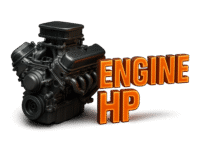

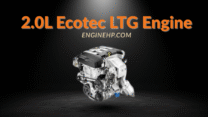
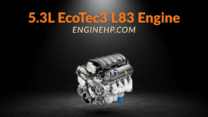
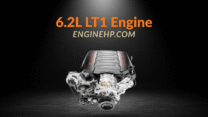
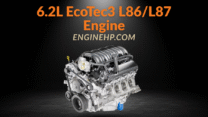
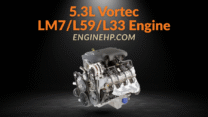
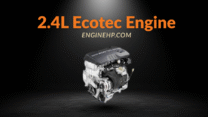
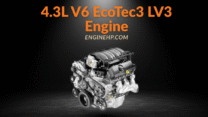
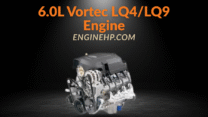
Leave a Reply